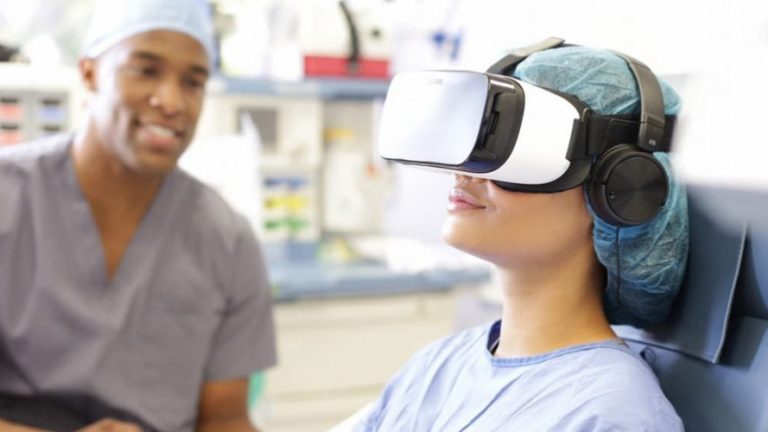VR to help women get through childbirth by providing pain relief in the latent or active phase of labor
VR is already being used effectively by the medical community in a variety of applications, such as helping to rehabilitate people who have had a stroke or other brain injury, and for overall pain management. However, using VR to help women get through childbirth and ease labor pain is one of the least looked at applications.
Labour is a long and painful process for women. For avoiding or alleviating pain, adjuvant treatments such as hydrotherapy, yoga, hypnosis, acupuncture, and relaxation techniques could be used. Recent literature indicates the successful use of immersive virtual reality for a variety of painful medical procedures. Immersive VR to help women get through childbirth because of hypothesized to reduce pain through distraction, a non-pharmacologic attentional mechanism.
The user’s brain is preoccupied with the flood of information presented by the virtual environment restricting the mind from processing pain signals. The investigators hypothesized that laboring women find immersive virtual reality as a beneficial tool for their overall labor and delivery experience.
It is very important to be motivated to study VR in labor because of the growing patient demand for drug-free deliveries and what is described as “indisputable data” showing that VR can help with medical conditions including depression and anxiety as well as acute and chronic pain.
VR technology offers simulated 360-degree experiences that look like real life. For example, you might put on a VR headset and see a beach with ocean waves. VR is already popular for gaming but has had limited applications in medicine outside of surgical training.
The technology has been studied in recent years as a “distraction therapy” for reducing pain associated with blood draws in pediatric patients. It’s also been researched as “exposure therapy” to help patients manage challenging symptoms associated with anxiety, phobias, and autism spectrum disorders.
The 40 study participants were first-time mothers who had not received any pain medication or epidural analgesia. All were experiencing contractions occurring every five minutes, which they classified as a 4 to a 7 on a pain scale of 1 to 10.
Patients who agreed to participate were randomized to use either no pain management therapy or to use VR headsets featuring a 30-minute program specially designed for labor. The VR helps women get through childbirth by having the choice to watch other programs, including games, but most chose the labor program. Researchers gathered vital sign information during this time.
At the end of the 30 minutes, researchers asked participants to rate their pain. Not surprisingly, women who opted for no therapy had increased pain scores. But women who used VR headsets recorded lower pain scores and lower heart rates, which may suggest a physiologic response to reduced pain.
Childbirth is called labor for obvious reasons. Though the result is rewarding, the hours-long process is grueling and painful.
But using a VR to help women get through childbirth can reduce the amount of pain a woman feels during labor, according to new research presented Friday at the Society for Maternal-Fetal Medicine’s annual meeting in Grapevine, Texas.
Many pregnant women struggle to decide whether to take pain medication during labor. For those who would rather skip the epidural, virtual reality devices offer immersive experiences that may help take the edge off, allowing them to push through the pain.
VR to help women get through childbirth so they can influence the way users process pain by engaging the visual cortex and other senses, according to researchers from Cedars-Sinai Medical Centre in Los Angeles.
However, using VR to help ease labor pain is one of the least looked at applications. It’s like there is a tremendous opportunity to offer VR as another safe and effective option and one that is medication-free to help ease a woman’s pain during childbirth.
The women who used VR during labor reported feeling less pain after they began using the technology, researchers found. By contrast, the women who were not given reported feeling increased pain. They also displayed a higher heart rate.






Add comment